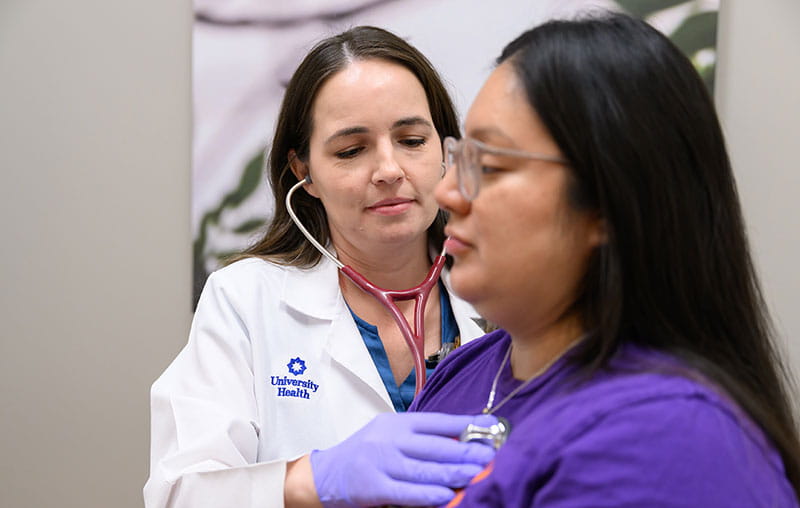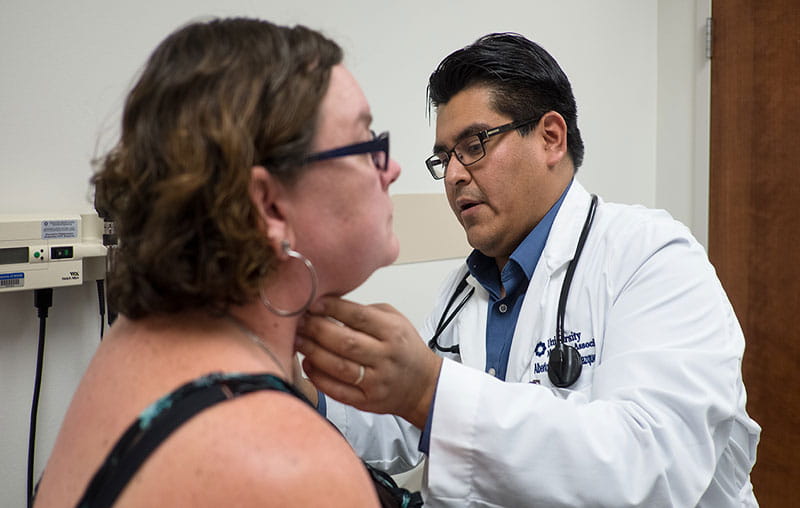You may be familiar with the acronym F.A.S.T. to help you recognize a stroke. The letters (Face, Arms, Speech, and Time) can help you see the symptoms of an acute stroke in someone else and find help as soon as possible.
However, a study by physicians at the University of Kentucky Stroke Center found that diagnoses based solely on the symptoms described in F.A.S.T. can miss up to 14% of stroke cases. There are many common symptoms of an acute stroke other than a person’s face drooping, arm weakness or slurred speech, though those symptoms are some of the most widespread.
According to the study findings, revising the acronym to B.E. F.A.S.T. when looking for the signs of a stroke could bring the number of missed cases down to 4%. The B and E are new additions that can help you catch other warning signs.
How to Recognize a Stroke
B – Balance
The person may suddenly have trouble with balance or coordination.
E – Eyes
They could experience sudden blurred, double or total loss of vision. This can happen in one or both eyes.
F – Face
Do you notice one side of their face drooping? Ask the person to smile.
A – Arms
Are they experiencing weakness in one arm? If they raise both arms, does one drift down?
S – Speech
Is speech slurred, are they unable to speak or are they hard to understand? Ask the person to repeat a short sentence like, “Remember the Alamo.” Do they repeat the sentence correctly?
T – Time to get help
If you notice any of these symptoms, call 911 and get the person to a hospital immediately.
The American Stroke Association has a Spanish acronym to help you remember the signs of a stroke, RAPIDO:
- Rostro caído
- Alteración del equilibrio
- Pérdida de fuerza en un brazo o una pierna
- Impedimento visual repentino
- Dificultad para hablar
- Obten ayuda. Llama al 911
Other Symptoms of Stroke
- Sudden confusion
- Numbness of the face, arms, or legs, especially on one side of the body
- Sudden, severe headache
Stroke Risk Factors You Can and Can’t Control
Strokes can happen to anyone at any age, and many of the risk factors for stroke are not within your control. These include:
- Age. Your likelihood of a stroke increases as you age.
- Family history. You may be at greater risk if your parent, grandparent or sibling has history of a stroke — especially if it occurred before 65. Certain genetic disorders can also cause stroke.
- Race. Black and Hispanic people have a much higher risk of stroke than white people, which is due in part to increased rates of high blood pressure, diabetes and obesity.
- Gender. Women have more strokes and die at a higher rate from strokes than men. Factors that may increase a woman’s risk of stroke include pregnancy, history of preeclampsia/eclampsia or gestational diabetes, oral contraceptive use and post-menopausal hormone therapy.
- Prior stroke, TIA or heart attack. If you’ve had a transient ischemic attack (TIA), you are almost 10 times more likely to have a stroke than someone else your age and sex.
Some risk factors are within your control. If you have any of these conditions, make sure you manage them to reduce your risk of having a stroke:
- High blood pressure
- Diabetes
- High cholesterol
- Heart disease

Lower Your Risk for Stroke
There are also changes and habits you can implement to your routines that can help reduce your risk. Stroke prevention tactics include:
- Quit smoking. Nicotine and carbon monoxide cause damage to your cardiovascular system and increase your risk of stroke. That risk is more than double for Black people who smoke. Learn about the University Health smoking cessation program.
- Eat healthier. Reduce saturated fat, trans fat and cholesterol in your diet.
- Get active. Aim for at least 150 minutes of physical activity per week. That’s about 20 minutes a day. But don’t worry about the number — just get started by sitting less.
- Lose weight. If you’re overweight or obese, losing as little as 5 or 10 pounds can significantly reduce your risk of having a stroke.
The American Heart Association says the link between heart disease and stroke is significant. Reducing your risk of one means possibly also avoiding the other. Getting active and making simple changes to your diet can help you avoid a devastating event like a heart attack or stroke down the line.
Stroke Care at University Health
University Health is a certified Comprehensive Stroke Center. This means we have the resources and medical providers to care for the most complex stroke cases. We also have advanced diagnostic technology and a dedicated neuroscience ICU.





